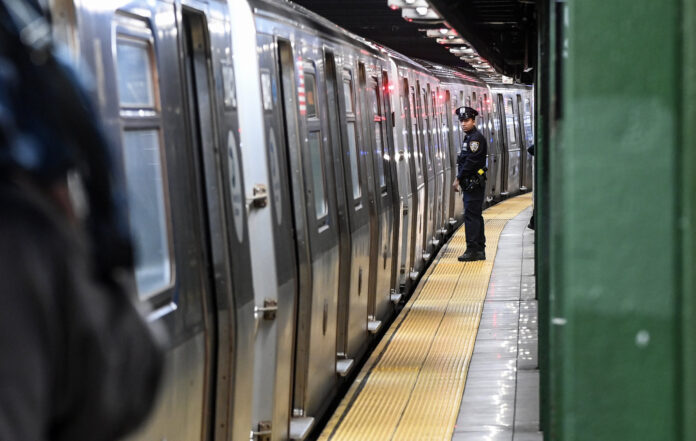New York Governor Kathy Hochul and Mayor Eric Adams have announced new data that shows significant progress on subway and transit public safety initiatives introduced last year.
Last October, the Governor and Mayor announced that the New York Police Department and the Metropolitan Transportation Authority (MTA) Police Department would surge officer presence on platforms while expanding capacity at the New York State Office of Mental Health to support unhoused individuals who are sheltering in the subway system and those who are suffering from severe mental illness. Additionally, Governor Hochul announced that teams deployed after October 2022 have helped more than 650 unhoused high-needs New Yorkers connect with critical intervention services.
Since the initiatives announced last October, major crime in the subway system is down 16 percent, compared to the same time period during the prior year. Additionally, the crime rate on subways is returning to pre-pandemic levels. In 2019, the rate of crime was 1.5 crimes per million riders. In 2022, the rate of crime was 2.3 per million riders, so far in 2023, the ridership adjusted rate is only 1.7 per million riders. Transit murders decreased from four to two. Further, this January has seen the lowest level of transit crime compared to any January since 1993, when this data was first collected. Transit shootings are down 14 percent, and there has been a notable decrease in robberies, down 30 percent. Overall arrests have increased 43.4 percent since October 2022 and Transit Adjudication Bureau summonses have increased by 84.8 percent.
On December 27, 2022 MTA announced that ridership had surpassed 1 billion, as riders continued to return to the subway and through October 2022, subway ridership is up 38.6 percent over the same period in 2021. The MTA customer satisfaction survey conducted in December 2022 also demonstrated an 18 percent increase in riders feeling “safer” or “much safer” on the trains or in the stations, the largest single-month increase seen since the start of the surveys in Spring 2022.
Governor Hochul is embracing a multifaceted approach to addressing the mental health crisis and its impact on public safety on New York City. This includes efforts to greatly expand the continuum of care, offer incentives to bolster the mental health care workforce, and to coax healthcare facilities into bringing back in-patient psychiatric beds that were taken offline during the COVID-19 pandemic.
There are now 10 teams of specially trained mental health practitioners – known as Safe Options Support teams -working with emergency shelters, outreach providers, supportive housing facilitates in New York City to transition the estimated 3,900 individuals living on the street or in the subway system into a stable living environment. These teams have already enrolled 650 individuals into Critical Time Intervention services, an evidence-based practice that helps connect vulnerable individuals to housing and services during difficult times of transition in their lives.
The state also is providing $10 million to establish two Transition to Home units in New York City to offer psychiatric center-based inpatient treatment for individuals with serious mental health issues who are experiencing homelessness. The first unit was established at the Manhattan Psychiatric Center in November and now offers 20 beds, with an additional five beds set to come online in the coming weeks, and a second 25-bed unit anticipated to come online sometime this winter.
As part of the Cops, Cameras, and Care initiative, Governor Hochul directed the establishment of a 60-bed transitional program for individuals that need extra care between hospitalization and housing. Utilizing $7.2 million in state funding, the Community Residential Step-Down programs will be established at four locations in New York City, and each include 15 units of transitional housing connected to wraparound, mobile services other supports necessary to help individuals transition into successful community living and permanent housing.
The state is conducting training for law enforcement and first responders on best practices for engaging individuals with serious mental illness who are experiencing homelessness. This training includes fundamental crisis intervention skills and the best practices for engaging the street population experiencing mental health illness.




